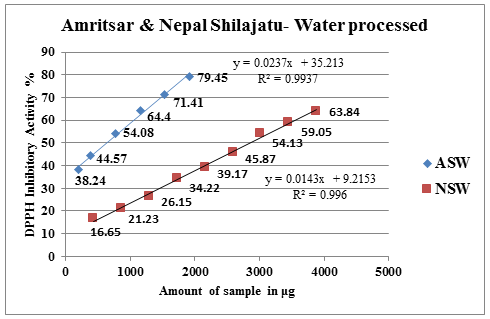Antioxidant Profile of Shilajatu (Asphaltum punjabinum): Impact of Drava/Media and Bhumi/Geography
DOI:
https://doi.org/10.5530/fra.2021.1.4Keywords:
Antioxidants, DPPH, Free radicals, Oxidative stress, ShilajatuAbstract
Introduction: The superoxide radical (O2-), hydroxyl radical (OH) are generated in physiochemical pathways. All biological systems have innate antioxidant defence mechanisms but these mechanisms can be inefficient due to poor diet intake, pollution, stress and chemicals etc. Therefore, it is imperative to consume antioxidants to shield cells from destruction by free radicals. Shilajatu is such a drugs of prime importance that has been advocated in the management of various ailments ranging from Diabetes to Immunomodulation and Antioxidant. Materials and Methods: The antioxidant potential of Shuddha Shilajatu along with impact of geography and processing media on it, was determined by using DPPH i.e. 1,1-diphenyl- 2-picrylhydrazyl Free Radical Scavenging Assay. Test was performed at the wavelength of 517 nm using 1 cm optical path cuvette at room temperature. The ultraviolet spectrum of Shuddha Shilajatu and Ascorbic acid was performed by UV-Vis spectrophotometer at different concentrations. The experiment was carried out in triplicate. The result was compared with ascorbic acid as it was taken as standard control under the same conditions. The sample concentration at which initial absorbance of DPPH solution get lowered by 50% has been considered as the endpoint for evaluating the antioxidant potential. Results: It has been found that Shilajatu samples processed in Triphala kwatha have shown better antioxidant profile than water processed samples. Moreover, sample procured from Amritsar showed much better antioxidant activity in comparison to Shilajatu sample procured from Nepal. Conclusion: Processing media and geography significantly modulate the effect and activities of Shilajatu.
Downloads
Metrics





